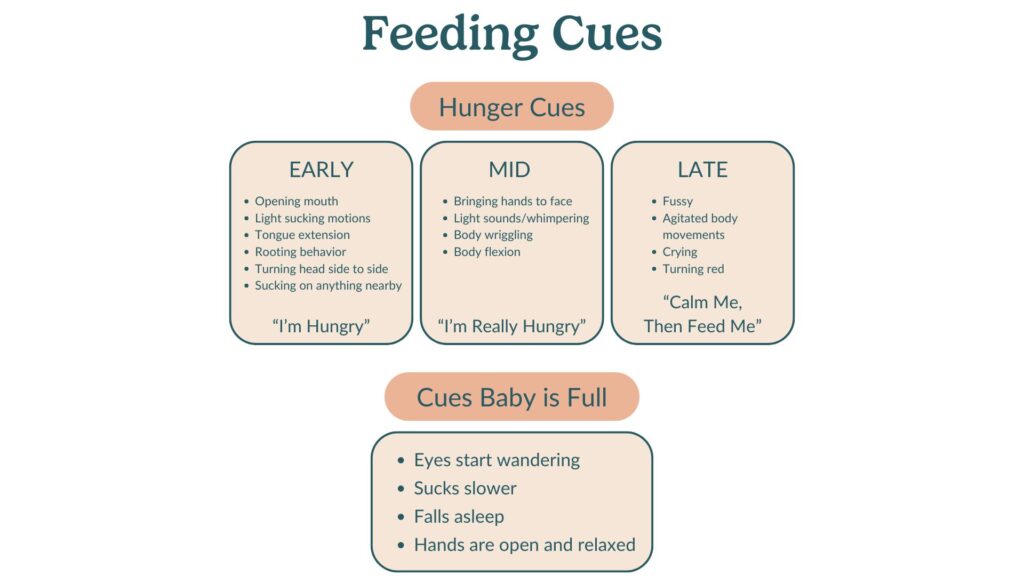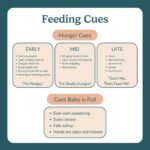feeding cues

Feeding cues
Feeding cues are the signals that babies give to indicate that they are hungry or full. Recognizing and responding to these cues can help ensure your baby gets the right amount of milk or food they need, promoting healthy feeding patterns and overall well-being.
What to watch out for
It’s important to recognize the signs that your baby is hungry or full and understand how to respond appropriately. Here are some common feeding cues and tips for managing them:
Hunger Cues
- Early cues: Your baby might start to move their hands to their mouth, make sucking motions, smacking lips, or root (turn their head towards the breast or bottle when their cheek is stroked).
- Mid cues: Your baby may become more active, squirming or fidgeting, and may start to fuss or whimper.
- Late cues: Crying is a late hunger cue. It's best to try to feed your baby before they reach this stage, as it can be harder for them to latch on properly when they are upset.
Read the blog post about each of these hunger cues.
Fullness Cues
- Slowing down: Your baby may slow down their sucking and seem more relaxed.
- Turning away: Your baby may turn their head away from the breast or bottle.
- Losing interest: Your baby may start to play or look around instead of focusing on feeding.
- Sealing lips: Your baby may keep their lips closed when offered more milk or food.
To manage feeding cues effectively, consider these tips:
- Feed on demand: Respond to your baby’s hunger cues promptly rather than following a strict feeding schedule. Learn more about responsive feeding.
- Observe closely: Pay attention to your baby’s signals to determine when they are hungry or full.
- Stay flexible: Be prepared to adjust your feeding routine based on your baby’s needs and cues.
- Provide comfort: Offer comfort and reassurance if your baby becomes upset or frustrated, especially if you miss early hunger cues.
Physical limitations or health circumstances
Certain conditions can affect how easily you can recognize and respond to feeding cues:
- Premature birth: Preemies may have subtler feeding cues and may need more help to establish effective feeding patterns.
- Medical conditions: Babies with certain medical conditions may have different feeding behaviors or require special feeding techniques.
- Feeding difficulties: Babies with latch issues, tongue tie, or other feeding challenges may show different or more subtle cues.
Other terms
Understanding related terms can help you better manage feeding cues and related feeding practices:
- Rooting reflex: The natural instinct that causes a baby to turn their head towards a touch on their cheek, indicating readiness to feed.
- Latch: The way your baby attaches to your breast. A good latch is important for effective breastfeeding. Learn more about positioning and latch.
- Cluster feeding: Periods when a baby feeds more frequently over a few hours, often in the evening.
- Growth spurts: Times when your baby’s growth accelerates, leading to increased hunger and more frequent feeding. Learn more about growth spurts.
- On-demand feeding: Feeding your baby whenever they show signs of hunger, rather than on a fixed schedule.


